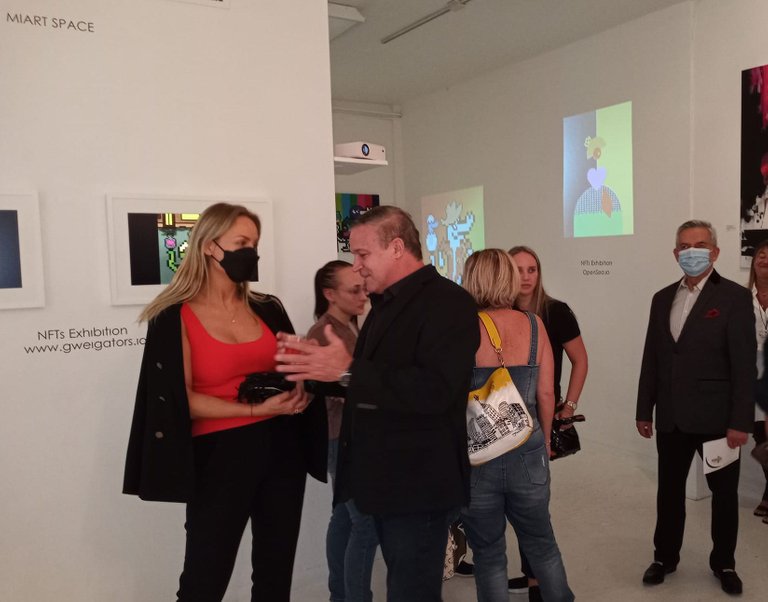THE NFT ART WORLD CHANGED TRADITIONS
Only a few months ago I was totally ignorant about this area of NFTs. However if I am running an art center, I felt pushed with the need of learning about the latest, the trendy and the most relevant aspects of this new form of art. It was last summer 2021 when someone from the local TV news called me for an interview about my opinion on the NFTS.
So well, I did my homework, created my NFTs and started swimming in the deep ocean of Opensea. After I knew that one of the biggest collectors of NFTs lives in Miami, my entire perspective of Crypto art changed. So, let me answer the basic question for you: What is an NFT? It is simply a non-fungible token, a digital art that can become an asset for a collector.
Last December we planned at the gallery our first NFTs exhibition. It was a total success, but it felt very weird to see all the walls in white when the projectors were off. It remind my an old story of "The Emperor's New Clothes" is a literary folktale written by Danish author Hans Christian Andersen, about a vain emperor who gets exposed before his subjects. Have you heard of it?
Any artist can create an online artwork, tokenize it with a unique dash in the blockchain and keep that token as proof of copyright ownership. A blockchain is a transaction network that helps show who owns a given online asset. But once all these is done, the romanticism of having a beautiful piece of traditional art in your home disappears, and the artwork becomes an asset.
A new art community of creators, online developers, and traders is pushing the art world into new era. It becomes more interesting when the online art marketplace started trading in non-fungible tokens, in cryptocurrencies on a blockchain platform. The blockchain ensures that the asset or NFT cannot be erased if a server goes down.
When all these started? It all started in 2017 with Crypto Punks, a set of 10,000 randomly generated punks that proved demand for the digital ownership of non-physical items. The art market has evolved rapidly ever since then as the underlying develops, and artists are selling verified, immutable works of art.
Art lovers and collectors are waking up to the power of decentralized networks and currencies. With creators and collectors generating meaningful revenue through entirely digital systems, the tokenization of gifs, memes, and MP4s is emerging as the most exciting and relevant blockchain use case.
Artists can always sell original artworks that are one of a kind; as well as book writers can still sign their books to make them more unique. In many ways, buying an NFT is like buying a limited-edition piece. An NFT is special and unique to the buyer but doesn’t mean that the original work’s copyright has been transferred.
NFTs have been around since at least 2017 when a company named Dapper Labs sold NFTs for digital cartoons. However, this recent NFTs boom is new and the courts have not even begun to address the legal and piracy issues this raises. The NFT mania exploded amid the pandemic as the world remained home bound and addicted to a screen.
Nowadays, in many homes and offices you can find fabulous digital screens where the proud collectors display multiple Nfts (as digital artworks). So why not? let's jump into this new era and join the online art. I have my current collection in Opensea platform which is very easy to use and allow artists to expose their art at a global level instead of local. Check out mines: https://opensea.io/anacarolinamoreno

I have the copyright of this image. The photo was taken at our December NFT art exhibit at the gallery.